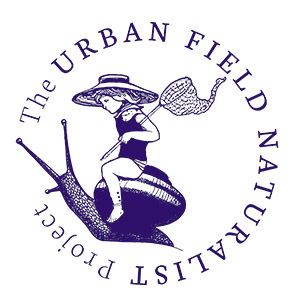
The Importance of Natural Buffer Zones
Glenn Smith
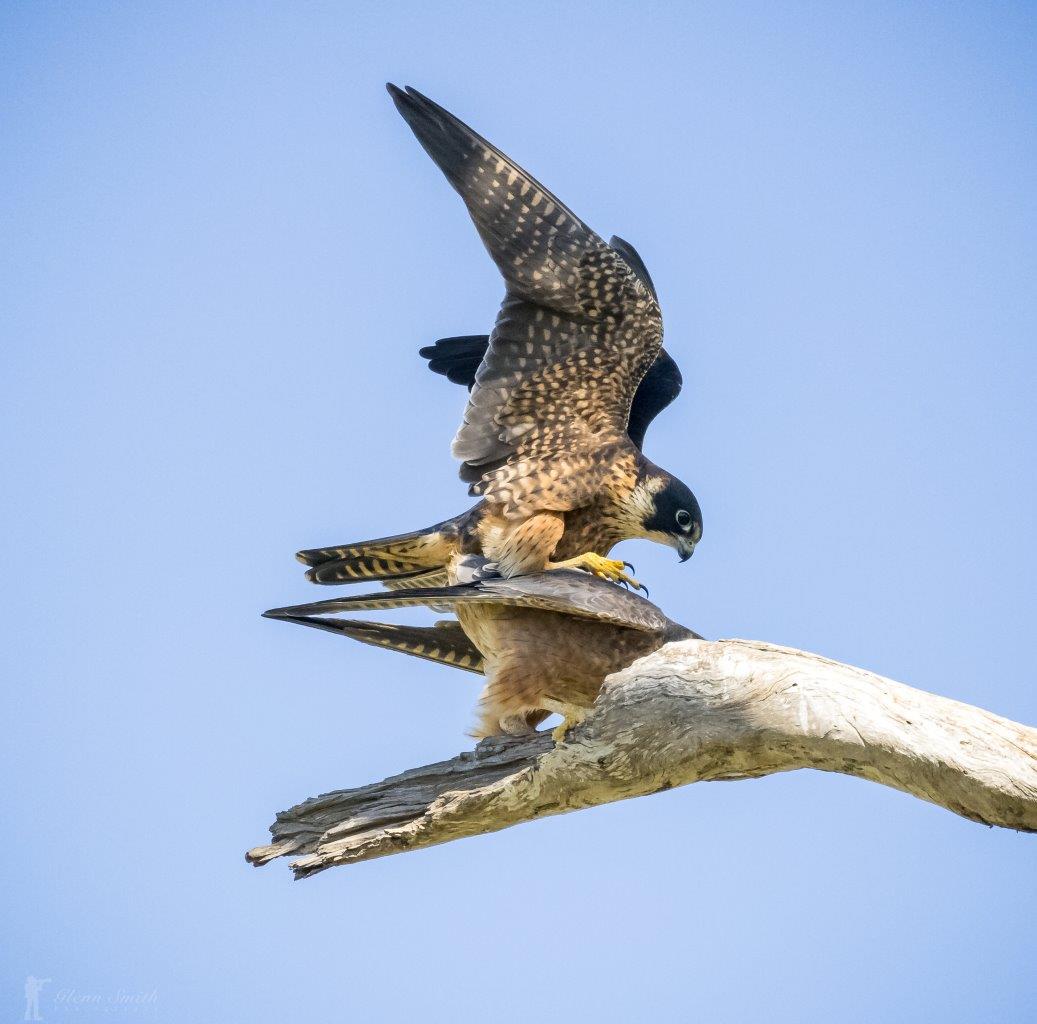
Living in Campbelltown, south-west of Sydney the sight of the urban sprawl is clearly apparent with the loss of vital habitat happening daily as the new suburbs are appearing at an alarming rate.
Houses in the new estates are so close the roofs all but touch, so there is little room for trees or small areas of habitat for our native wildlife. So, the importance of natural bushland pockets and buffer zones is more critical than ever.
One such buffer zone is the Australian Botanic Garden, Mount Annan. This is an area of over 400 hectares of gardens and natural bushland pockets. These pockets are rich in plant life as you’d expect from a botanic garden, but this also provides habitat for wildlife: within the gardens up to 180 different bird species have been recorded and an abundance of other local wildlife can be observed.
You never know just what you’ll find each time you visit. Last weekend I was lucky enough to find a pair of Australian Hobby (Falco longipennis). These are just one of the raptors that make the gardens home. The smaller male catches prey and brings it to the larger female. This series of photos shows the exchange taking place. Plus, some activity to ensure the continuation of the species.
These little pockets of natural bushland and gardens are so important to our fragile urban landscapes. We need to hang on to every bit we have and where possible reclaim some back.
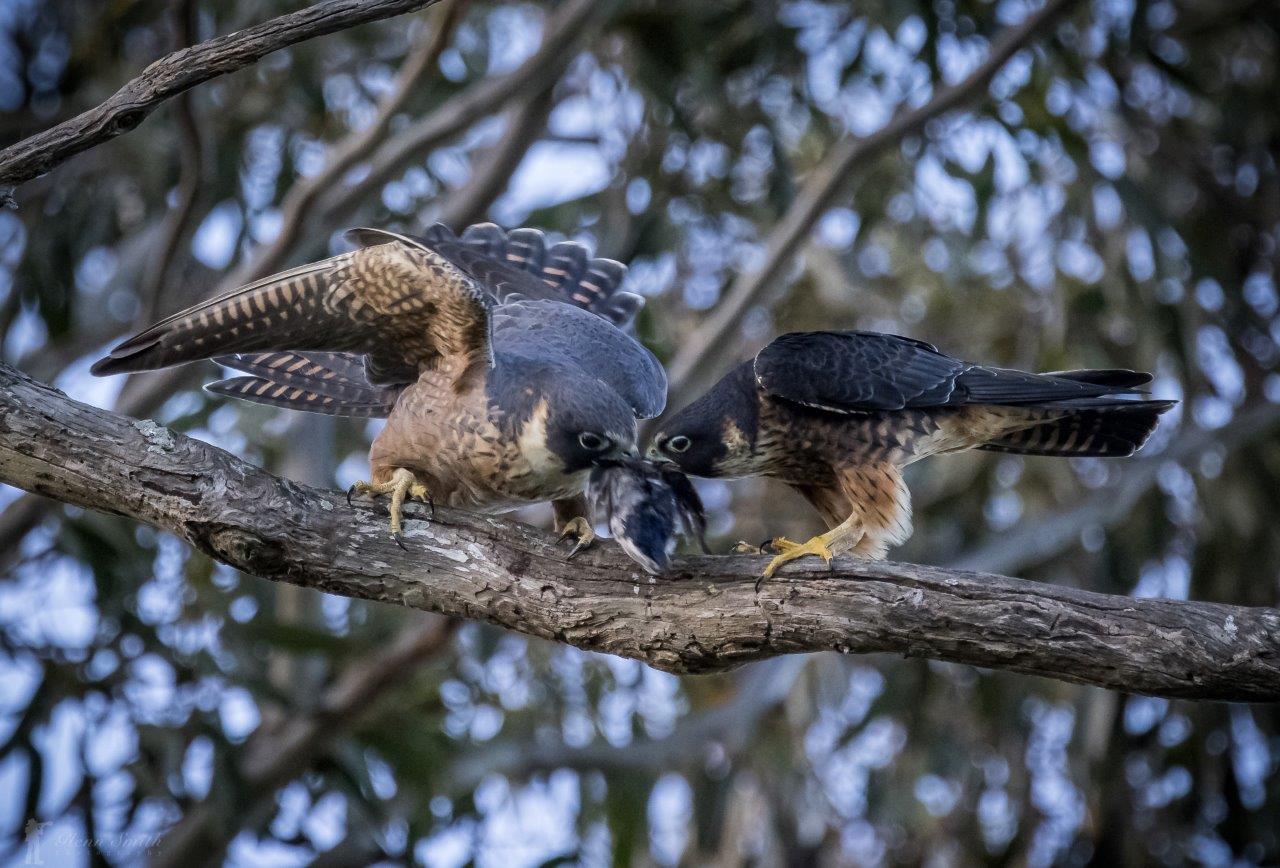
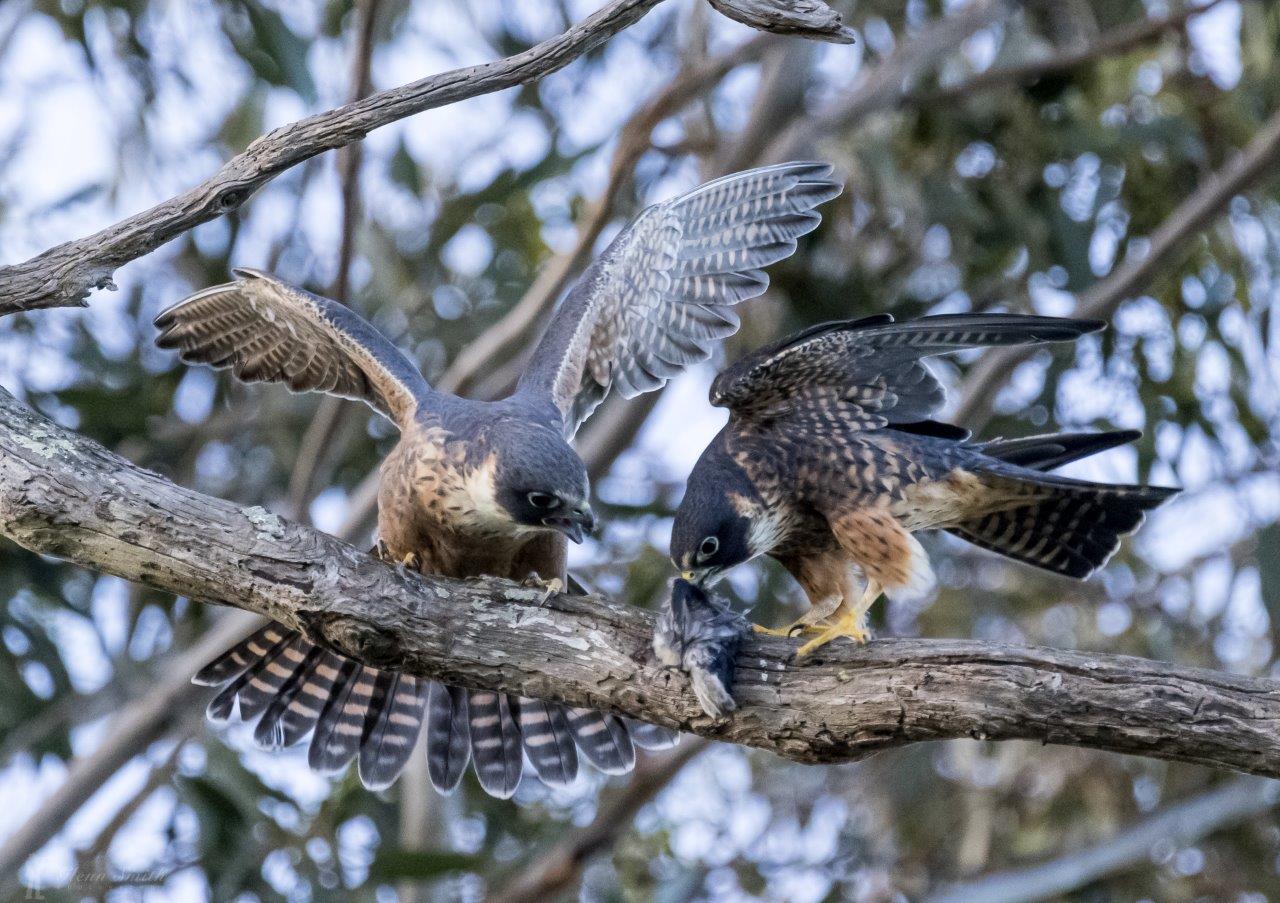
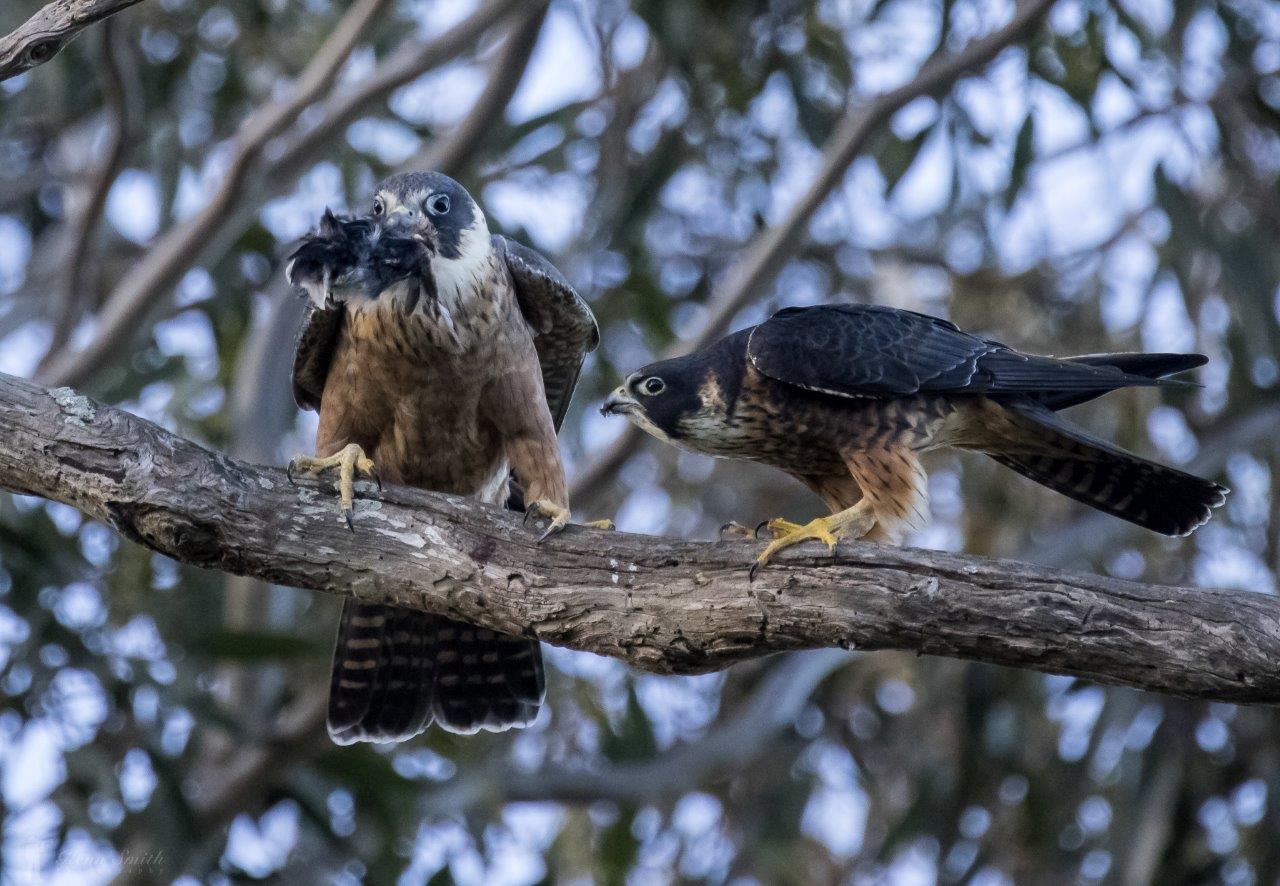
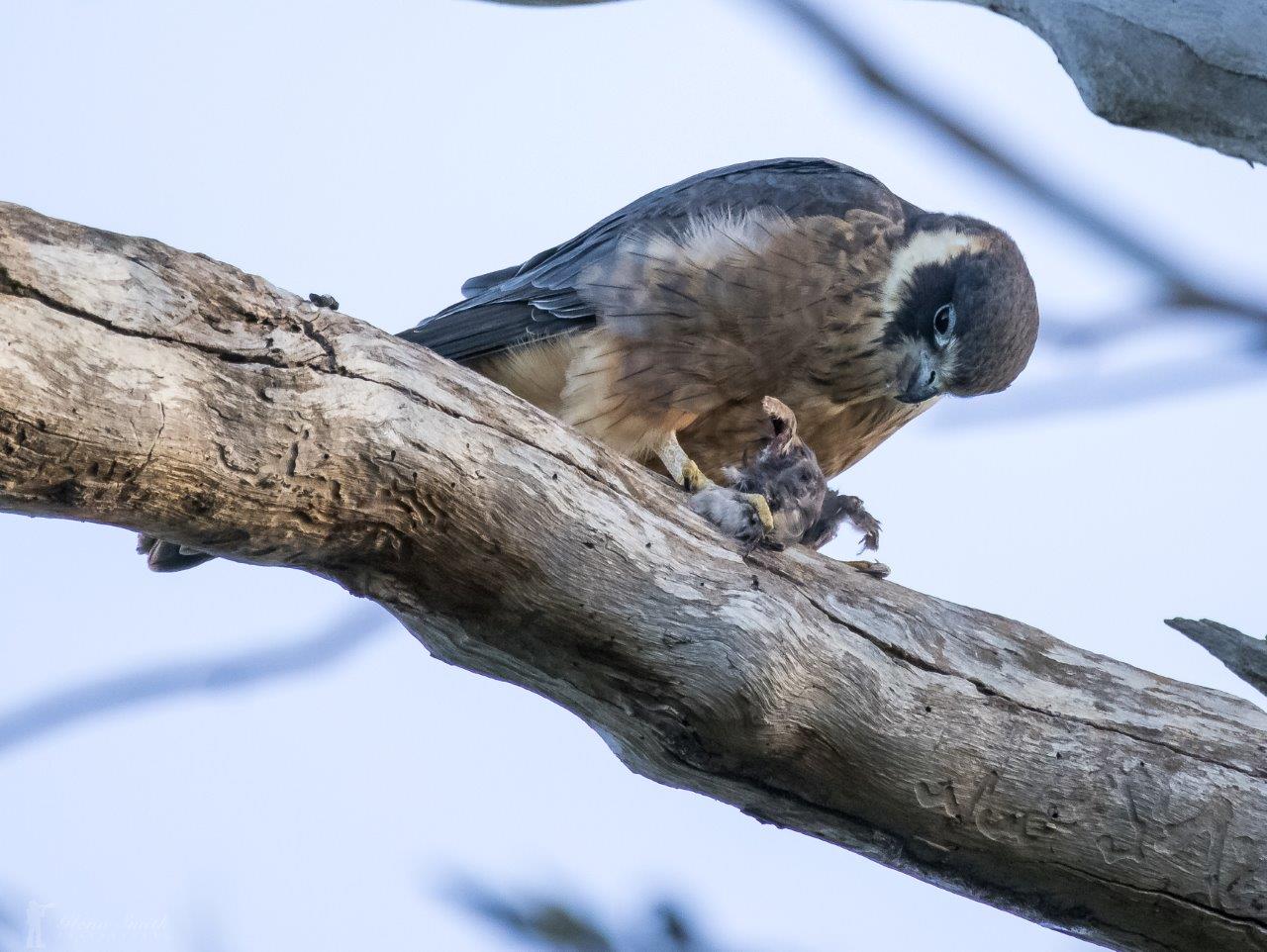
Author bio: Glenn is an amateur photographer that spends most Saturdays for the past few years photographing the wildlife and plant life within the Australian Botanic Gardens at Mount Annan.
I: @GlennRSmith66